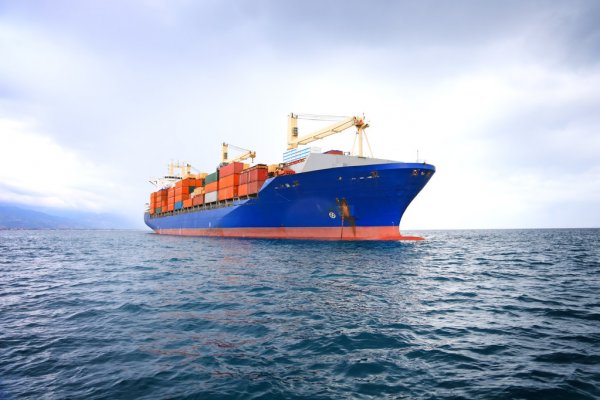Marine/Offshore
Marine / Offshore Platform On-board HVAC and Mechanical Noise and Vibration Measurements
Marine / Offshore drilling platforms are highly complex constructions, their management requires pleasant working environment for maximizing profitability.
The setting up a vibration Condition Monitoring programme in the Offshore Oil & Gas industry is much challenging. Platform staff is rarely trained in highly noisy & vibrational condition. In this harsh challenging environment, collecting reliable noise and vibration measurement data while minimizing the time spent on the task are practical requirements for modern maintenance programmes.
In the offshore industry, Noisy & Vibrational Condition Monitoring is now common practice. It is indeed essential to carry out noise & vibration analysis on critical machines in order to control and minimize unplanned shutdowns due to unforeseen machinery failures.
However, operators are facing specific challenges due to the day-to-day management of offshore platforms. Sub- contracting the entire process to a service company is also not a sustainable option, as transporting service engineers by helicopter to the platform and back is costly and time consuming, and it also requires a lot of planning.
The related data collection is often carried out with a handheld vibration analyser and a sensor attached to a mounting magnet.
This method provide some limitations in terms of data reliability especially when the measurement locations are hard to reach. For the vibration analysis the collected data can turn out to be meaning-less when the readings were not taken at the exact same position across the various measurements.
In the hazardous areas, the collection of vibration readings using handheld devices can also present highly risks for untrained working staff since the assets to be monitored are remote place (e.g. drilling platforms), machines or equipment’s are hard to reach and located in hazardous location. For the operators of pumping stations, drilling platforms, refineries with intrinsically safe areas, the safety norms of the employees must be ensured always in higher priority basis. Therefore operators are interested in keeping the vibration data collection process as short and easy as possible in order to decrease the exposure of the risks.
Specifically in the marine / offshore sector, the requirements for data integrity are very high because of data analysis is carried out onshore by in-house or external service providers.
Related vibration data collection should be quick, safe and reliable. Ideally, online monitoring systems automatically take care of the critical equipment’s health.
Application: This Rule Note provides procedural and technical requirements for the assignment of the following additional class notations:
- COMFORT HEALTH-NOISE- g with regard to noise criteria
- COMFORT HEALTH-VIBRATION - g with regard to vibration criteria

Comfort and Health on-board Offshore Units: The additional class notations Comfort Health – Noise and Comfort Health – VIBRATION may be assigned to all offshore units in accordance with Part – A of NR-445 Rules for the Classification of Offshore Units.
Principles: This Rule Note deals with the habitability of offshore units with regard to for noise and vibrations. The assessment is based on two different requirements:
- Comfort requirements applicable for accommodation, service, navigation and control spaces.
- Health requirements so as to protect workers from risk arising from physical agent (noise and vibration levels are given for working spaces).
The assigned grade is made on the basis of measurements performed by, or under supervision of an acoustic and vibration specialist from the Society during building stage, sea trials or in service. However, measurements may be performed by another acoustic and vibration specialist from external company.
Regulations - Standards
-
- ISO 31/VII, Quantities and units of acoustics
- IEC Publication 61260, Octave, half-octave and third octave band filters
- IMO Resolution MSC.337(91), Adoption of the Code on noise level on-board ships)
- ISO 717, Acoustics – Rating of sound insulation in buildings and of building elements
– Part 1, Airborne sound insulation in buildings and interior elements
-
- ISO 9612, Acoustics – Guidelines for measurement and assessment of exposure to noise in a working environment
- ISO 1996, Acoustics – Description, measurement and assessment of environmental noise
– Part 1, Basic quantities and assessment procedure
– Part 2, Determination of environmental noise levels
-
- ISO 1999, Acoustics – Determination of occupational noise exposure and estimation of noise-induced hearing impairment
- ISO 3382, Acoustics – Measurement of the reverberation time of rooms with reference to other acoustical parameters
– Part 1, Performance spaces
– Part 2, Reverberation time in ordinary rooms
-
- ISO 4869, Acoustics – Hearing protectors
– Part 2, Estimation of effective A-weighted sound pressure levels when hearing protectors are worn
-
- ISO 16283-1, Acoustics – Field measurement of sound insulation in buildings and of building elements
– Part 1: Airborne sound insulation
This rule refer to the following standards applicable to vibration:-
- ISO 2041, Vibration and shock – Vocabulary
- ISO 6954, Mechanical vibration and shock – Guidelines for the overall evaluation of vibration in merchant ships
- ISO 2631-1 Mechanical vibration and shock – Evaluation of human exposure to whole-body vibration
– Part 1 General Requirements
- ISO 8041, Human response to vibration – Measuring instrumentation.
Documents to be submitted:
- List of working areas, where individual hearing protectors are required.
- Hearing protector’s technical data sheets including attenuation data
- General arrangements
- Measurement program: Loading conditions, equipment / machinery operating conditions and Weather conditions.
Measurements:
Measurements to be taken during the survey are to be performed under the below conditions.
- Measurement are to meet the requirements of ISO 2923, IEC 61672-1, IEC 61260 and IEC 60942 for noise,
and ISO 2631, ISO 6954 and ISO 8041 for vibration. - Sound insulation measurements are to be carried out according to ISO 16283-1.
- The reverberation time measurements are to be carried out according to ISO 3382.
Note: The maximum deviations allowed during the cross comparison are 2 dB (A) for noise measurements and 0, 05 m/s² for vibration measurements for both single amplitude peak acceleration and overall frequency.
Measuring locations:
- Noise level
- Vibration level
- Insulation measurements
- Reverberation time measurements

Note: The number of measuring points should not exceed 250.
Measurement in Accommodation, Services, Navigation and Control Spaces.
In cabins, the measurements are to be carried out at the centre of the room. For large public rooms, such as lounges, restaurants, etc., measurements are to be carried out in different locations, each measuring points covering less than 30 SqM.
Measurement in working spaces: In order to assess the exposure of personnel to noise and whole-body vibration at working environment, measurements are to be carried out in all working spaces. Special attention should be paid to working spaces located close to identified sources of Noise & Vibration. The conditions to be fulfilled during measurements. Additional details of these conditions may be taken from International Standards.
- IMO Resolution MSC.337 (91) and ISO 2923 for noise
- ISO 2631-1 and ISO 6954 for vibrations
Harbour test conditions:
Offshore trial conditions.
- Propulsion engines for mobile units in normal running conditions
- HVAC
- Wash water pump
- SRU pump
- Water injection pump
- HHP compressor
- HP compressor
- LLP compressor
- Offloading pump
- Turbine/diesel generator
- LP-MP compressor
- SWLP
- Laundry with the entire equipment running.

Any other frequently used equipment (more than 1/3 of the times at sea) is to be run at its normal operating condition (if practicable).
Heating, Ventilation and Air-conditioning units are to be running in normal condition, corresponding to the rated airflow.
Tests have to be conducted in sea and weather condition, Measurements carried out with worst weather conditions may be accepted at the sight of the results.
Additional Requirements for Comfort Health-Noise:
Measurement procedure of Accommodation, Services, Navigation and Control areas.
To evaluate the nominal noise level inside accommodation, service, navigation and control spaces, LAeq, T value is used.
A. LAeq,T (dB(A) re. 20 µPa) is the equivalent continuous A weighted sound pressure level, where T is greater than 20 seconds. Results are to be given on global values (dB (A)) calculated in third octave bands from 20 Hz to 20 kHz.
B. To evaluate the required privacy inside accommodations, the apparent weighted sound reduction index R’w is to be calculated. R’w (dB) is a field measure of airborne sound insulation between rooms. This index is to be determined in accordance with ISO 717-1 and ISO 16283-1.
C. To evaluate the speech-blurring effect of reverberation in large spaces such as mess rooms and recreation rooms, the reverberation time RT60 is to be calculated. RT60 (seconds) represents the amount of time required for sound to decrease by 60 dB.
D. For each room tested, the RT60 is to be evaluated from T20 which represents the arithmetic mean of all measurements for the octave bands 500 Hz, 1000 Hz and 2000 Hz. For each space, reverberation time measurements points are to be selected such as to be consultant of the acoustic environment, each measuring point covering less than 30 Sq.M.
Measurement procedure for working area
To evaluate the maximal noise exposure of workers during a normal working day, LAeq, T and LCpeak values are used.
A. LAeq,T (dB(A) re. 20 µPa) is the equivalent continuous A weighted sound pressure level, where T is greater than 60 seconds. Results are to be given on global values (dB (A)) calculated in third octave bands from 20 Hz to 20 kHz.
B. LCpeak (dB(C) re. 20 µPa) is the instantaneous C weighted peak hold noise level.

Requirements

Noise measurements in accommodation, services, navigation, and control spaces.
Noise levels in accommodations, service, navigation, and control spaces corresponding to the noise grade “g” are provided in Tab 1 and Tab 2.- Tab 1 gives requirements for accommodation platforms.
- Tab 2 gives requirements for the living quarters included on production platforms.
